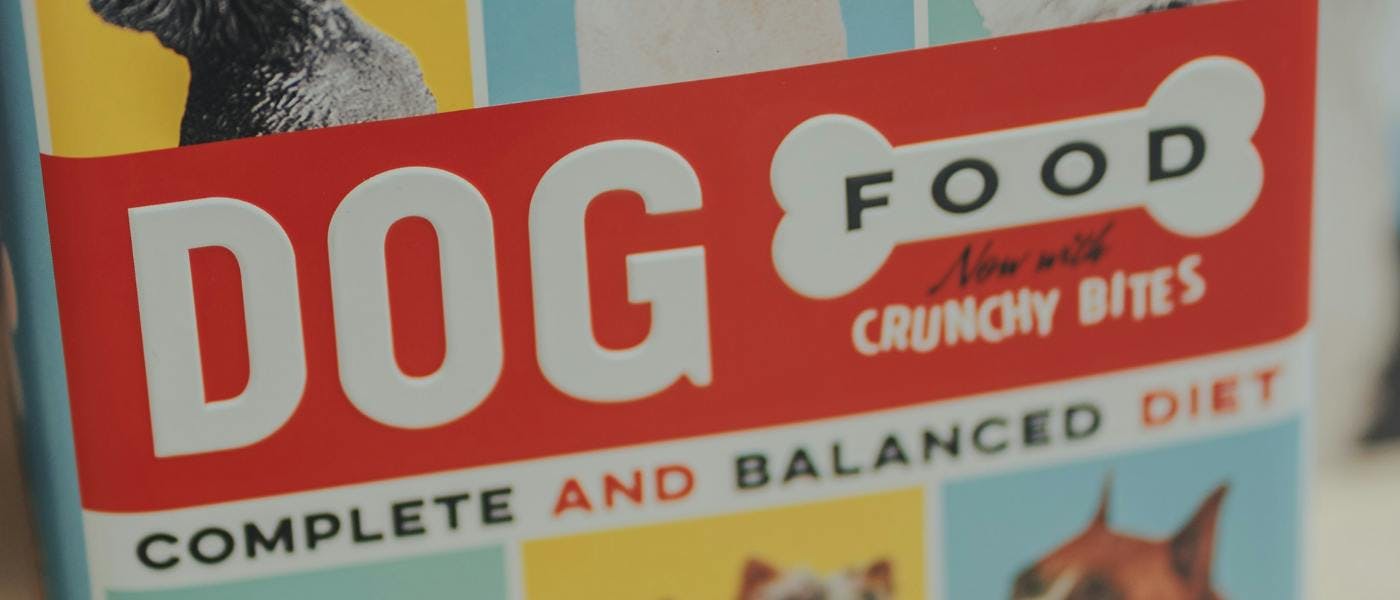How To Choose The Right Food For Your Dog
A good diet is the cornerstone of good health, but with so many options (and without a personal dog food advisor!) choosing the best dog food for your bestie can be a challenge.
Here’s a round-up of your options from veterinarian Dr Steph Wenban BVSc MRCVS:
Wet Dog Food:
This is any dog food that hasn’t had the water removed by food processing methods such as extrusion or dehydration.
Pros:
- Canned, pouch and fresh dog food delivery choices available to suit your budget, lifestyle and dogs taste
- Tins can be stored and kept shelf stable long time
- Tasty for dogs and can be a good option for picky eaters
Cons:
- As the food still contains water, dogs need to eat more by volume to get the same calories compared to dry food
- Can be costly, particularly for large breed dogs
- Variable meat content and ingredient quality between different brands
Dry Dog Food:
Often called ‘kibble’ or ‘dog chow’ these have been cooked, removing moisture to form crunchy bite size pieces.
Pros:
- Longer shelf life that fresh or raw foods
- Usually the most cost effective
- Easy to store and feed on the go
Cons:
- Variable quality of ingredients, most contain very little meat and high carbs compared to wet or raw options
- Many will contain preservatives, artificial flavorings and sweeteners
- Larger bag sizes can be an oversupply for small breed dogs
Raw Dog Food:
Often anecdotally viewed as healthier, there are some important considerations if deciding to feed raw — particularly if you have young, or immunocompromised family members.
Pros:
- Can be easily tailored and personalized to your dog
- Easily bought in bulk and frozen for storage
- Most will contain little to no artificial colors, flavors or preservatives
Cons:
- Hard to balance the vitamins and mineral requirements adequately if choosing homemade (store bought options are more likely to be balanced and complete)
- Increased risk of spreading harmful bacteria, such as Salmonella, to humans
- Short shelf life, once defrosted will need to be used in a few days
How to choose a dog food:
The type of food you choose, whether it’s wet, dry or raw, will depend on what is right for you and your dog based on the pros and cons above. Once you’ve decided the type, here’s some pointers to consider when selecting a brand of dog food.
The FDA’s regulation of dog foods requires that all foods sold are free from harmful chemicals and safe to eat, as well as labelled accurately. However there is no such thing as an ‘FDA approved dog food’ to help narrow your search.
Instead, when choosing a dog food start by looking at the label. The main ingredient of each food will be listed first. So opt for a food that has a protein source (for example, chicken, beef or fish) as the first ingredient, rather than a grain (for example, rice or oats).
A note on grain-free dog foods: These can sometimes contain high levels of carbs, so be sure to look at the label and assess the first few ingredients listed as these are the highest quantities.
Also look for the type of meat present, as cheaper brands contain meat-meals rather than a direct meat source. Meat meals are by-products that are rendered and dried at high temperatures to make a powder that is added to pet foods.
Nutritionally complete & balanced diets:
Some dog food manufacturers are members of the American Association of Feed Control Officials (AAFCO), a voluntary regulatory body providing guidance on the levels of vitamins and minerals needed in dog foods. AAFCO diets are nutritionally complete and balanced, which mean they meet the minimum requirements needed to avoid nutritional deficiencies.
Choosing a balanced and complete diet will give your dog the essential nutrients needed to survive, but many pet parents today are choosing to include extra nourishment in their dog’s daily routine through supplements — helping their dog to thrive.
Supplements like The One/products/the-one can offer added support for your dog’s lifestyle, helping keep them fit and active. Containing ingredients not found in dog foods, The One can build on a healthy diet to promote soothe skin, improve digestive health, strengthen mobility, balance inflammation and even optimise immune defences.
If you’re unsure of the benefits supplements could have for your dog, head to The One/products/the-one to find out more.
